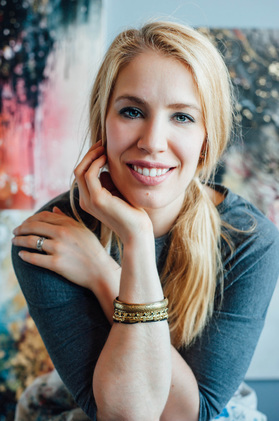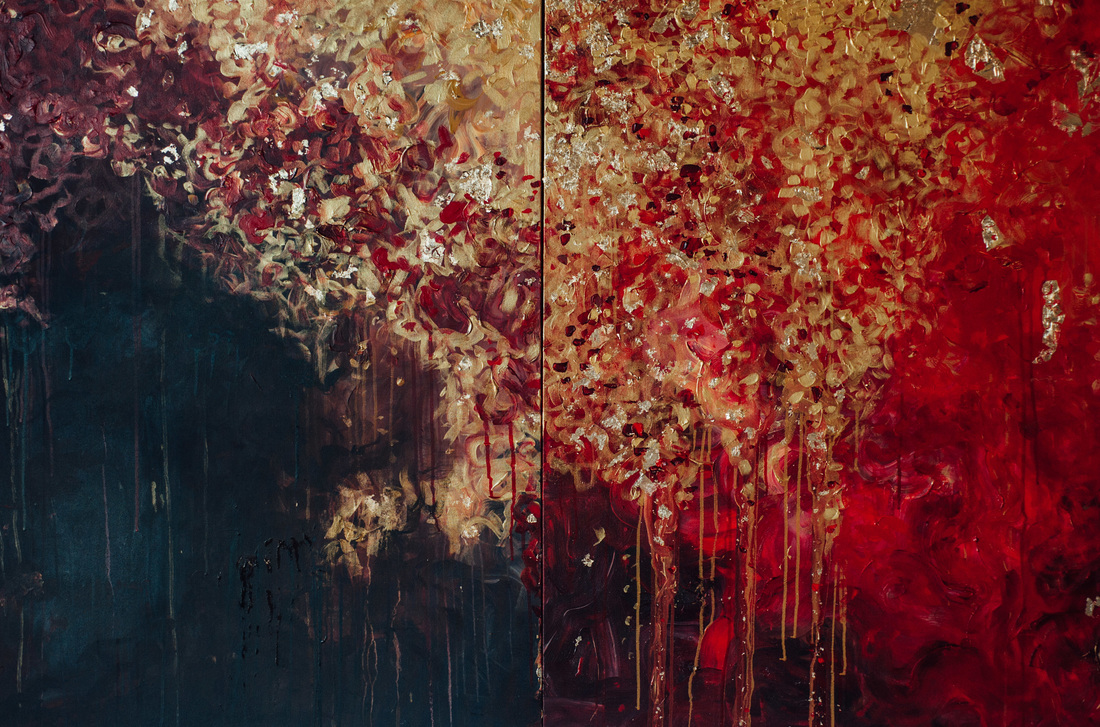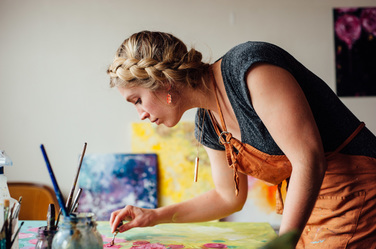I MAKE ART BECAUSE I HAVE A LONGING FOR A BEAUTY I CANNOT FULLY SEE
|
Sehnsucht is a German word that I first came across as a music student in college. At the time, I was singing text penned by German Romantic poets, and I struggled to translate the complexity of this little word that appeared so often. Longing, the most common translation, falls far short of the true experience of Sehnsucht, which is more like receiving impressions of beauty that I cannot fully inhabit. These impressions feel like memories that exist in the shadows, never quite coming fully into the light. They come in the form of crisp autumn air robbing the trees of their leaves. They arise in the form of a few bars of a Brahms symphony, a few verses of a Robert Frost poem, or a conversation I have with someone that I find deeply fulfilling but leaves me aching for something beyond my reach.
These moments have always come with a flurry of questions. For what exactly am I longing? Why does beholding beauty ache so deeply? Can anything in this world satisfy my longing fully? I make art to explore those questions. The process allows me to visually explore this longing; it is an experience that points me to the incompleteness of my soul. Through it I ache, I stretch, and I yearn for something that will bring that part of me I have always longed to see into focus. This is a deeply prayerful and spiritual process. I reach through it toward an Eden I have never seen, yet for which I am homesick—a peace I have never known, yet which seems to call me by name. Much of my painting process has been shaped through this process of longing, but also through my own suffering and discontent. I have a need to press into my own suffering and trauma and into those spaces that others have been willing to share. In my experience, the creation of art can be generative, making others feel known and understood and contributing positively to our communities and spheres of influence. By being honest about my own struggles and willing to witness the pain of others, I become a visual biographer of sorts. Through this process I aim to explore the beauty, the pain, and the frailty of human existence using temporal elements: in particular ink and metal foil. Metal tarnishes over time. Paint degrades; therefore, my paintings will pass away one day, be painted over, or be destroyed. I never want to forget their ephemeral nature and misplace the source of the feelings I possess when I view them or make them. Through my education in music, I learned to synthesize previously created material, tradition, and my own ideas to create a new art that is both shared and original. I have carried this method of co-creating into my painting practice. I particularly enjoy visually exploring the stories of those who live across a divide from me. For several of my projects, that divide has been time, as I have chosen to engage with great historical works like the Brahms Requiem or John Donne’s Holy Sonnets. The modern mind regularly strips historical work from its context and its paradigm. It sees the work from afar and fills in the details. In that process of seeing and assuming, many great works can lose some of the power of their meaning. Through study of something like the Holy Sonnets, I strive to see the work as closely as I can, sitting with it, studying it, asking myself the context this work had in its historical era as well as in the author’s life. I read what others have learned, I look for the spaces that still exist, and I try to enter into those spaces respectfully. I take my discoveries and visually express them through the medium of contemporary painting. The research that I share with my audience along with the artwork I create gives my audience a twofold bridge to stand upon to approach the work. The first bridge closes the gap between the audience and the paintings themselves. Viewing contemporary artwork is intimidating for many, but my research gives them a context if they desire it or need it to engage the work. The second bridge is biographical; it creates a bridge for them to engage another human being across the divides of culture and time, creating a shared space and experience of humanity. In this liminal, hopeful space, there are often glimmers of the fulfillment of our longing and the healing of our suffering. |
All artwork, photographs, and text on this site are copyright © Kelly Kruse, 2014-2024. No content may be used without express permission from the artist. All rights reserved.




